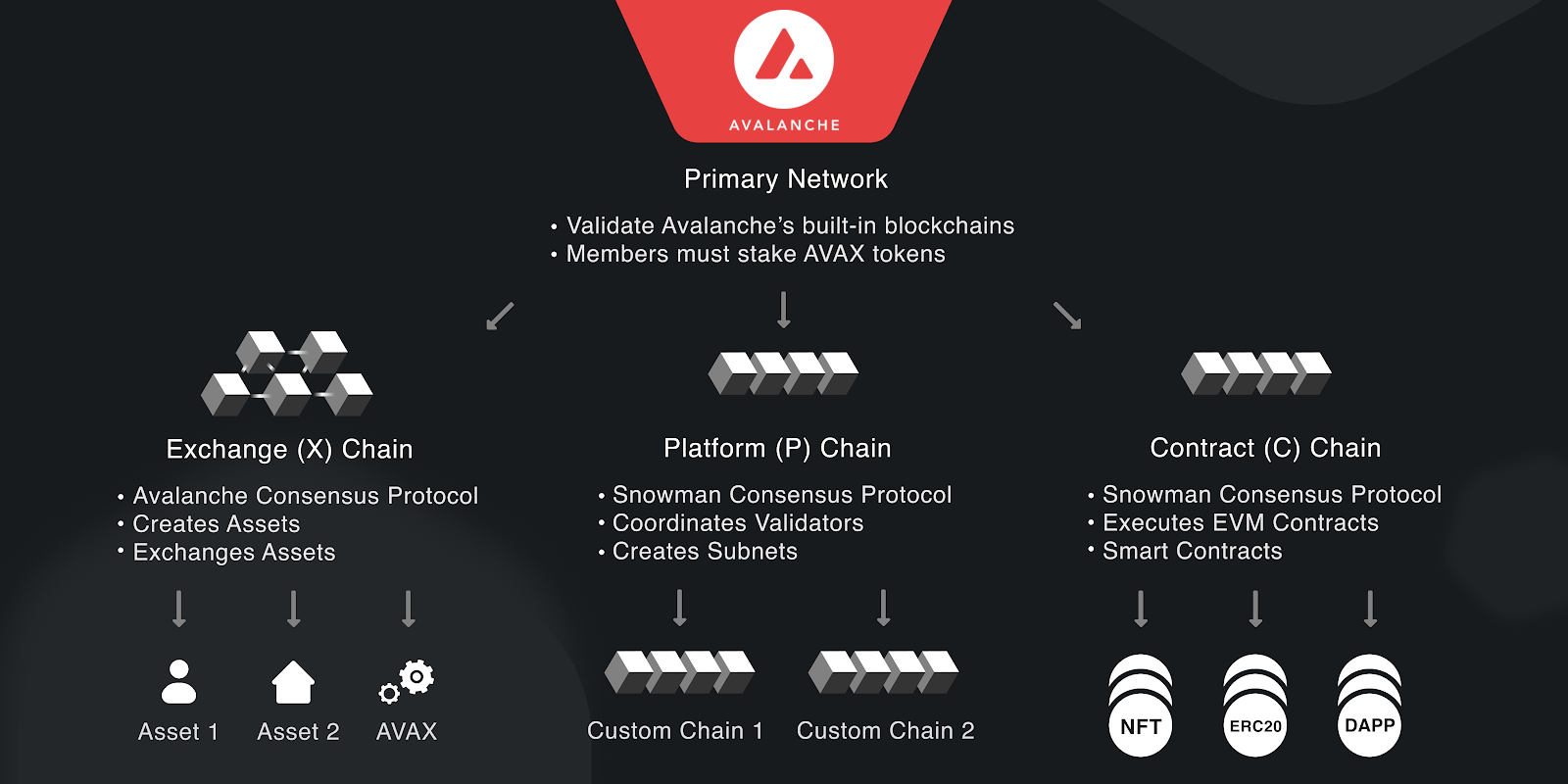Avalanche Platform
Avalanche features 3 built-in blockchains: Exchange Chain (X-Chain), Platform Chain (P-Chain), and Contract Chain (C-Chain). All 3 blockchains are validated and secured by all Avalanche validators which is also referred as the Primary Network. The Primary Network is a special Subnet, and all members of all custom Subnets must also be a member of the Primary Network by staking at least 2,000 AVAX.

Contract Chain (C-Chain)
The C-Chain allows for the creation smart contracts using the C-Chain’s API.
The C-Chain is an instance of the Ethereum Virtual Machine powered by Avalanche.
Platform Chain (P-Chain)
The P-Chain is the metadata blockchain on Avalanche and coordinates validators, keeps track of active Subnets, and enables the creation of new Subnets. The P-Chain implements the Snowman consensus protocol.
The P-Chain API allows clients to create Subnets, add validators to Subnets, and create blockchains.
Exchange Chain (X-Chain)
The X-Chain acts as a decentralized platform for creating and trading digital smart assets, a representation of a real-world resource (e.g., equity, bonds) with a set of rules that govern its behavior, like "can’t be traded until tomorrow" or "can only be sent to US citizens."
One asset traded on the X-Chain is AVAX. When you issue a transaction to a blockchain on Avalanche, you pay a fee denominated in AVAX.
The X-Chain is an instance of the Avalanche Virtual Machine (AVM). The X-Chain API allows clients to create and trade assets on the X-Chain and other instances of the AVM.